The aviation industry plays a crucial role in global transportation, connecting people and goods across vast distances. However, this convenience comes at a significant cost to our environment. As we soar through the skies, the impact of flying on climate change is becoming increasingly evident. The sector is responsible for approximately 2-3% of global greenhouse gas emissions, a figure that may seem small but is substantial when considering the rapid growth of air travel. In fact, the International Air Transport Association (IATA) estimates that air traffic could double over the next two decades, potentially leading to a staggering increase in emissions.
At the heart of this issue lies the understanding of aviation's carbon footprint. Each flight, whether it’s a short domestic hop or a long-haul international journey, contributes to the accumulation of carbon dioxide and other harmful gases in our atmosphere. The factors contributing to this environmental impact are multifaceted, ranging from the type of aircraft used to the efficiency of flight operations. For instance, older aircraft models tend to be less fuel-efficient, burning more fuel and releasing more emissions per passenger mile compared to modern designs.
Furthermore, the aviation sector is not just about passenger travel; cargo flights also play a significant role in emissions. With the rise of e-commerce, the demand for air freight has surged, leading to an increase in flights dedicated solely to transporting goods. This trend further complicates the challenge of mitigating aviation's impact on climate change.
As we delve deeper into the aviation industry's contribution to climate change, it becomes clear that action is necessary. Airlines and manufacturers are beginning to recognize their responsibility and are implementing various mitigation strategies to reduce their carbon output. From developing sustainable aviation fuels (SAFs) to investing in more efficient aircraft designs, the industry is taking steps towards a more sustainable future. However, the road ahead is fraught with challenges, and the effectiveness of these measures will depend on collaboration among stakeholders, including governments, airlines, and technology innovators.
In summary, while the aviation industry is essential for global connectivity, it also poses a significant threat to our climate. Understanding its carbon footprint and the factors contributing to its environmental impact is the first step towards implementing effective solutions. As we explore current mitigation strategies and future trends, it is crucial to keep the conversation going about how we can make flying more sustainable for generations to come.

The aviation industry plays a crucial role in global connectivity, but it comes at a significant environmental cost. In fact, aviation is responsible for approximately 2-3% of global carbon dioxide emissions. This might seem like a small fraction, but when you consider the rapid growth of air travel—predicted to double in the next 20 years—the implications for our planet become alarming. Each flight emits a substantial amount of greenhouse gases, contributing to the global warming crisis we face today.
Several factors contribute to the aviation sector's carbon footprint. First and foremost is the type of fuel used. Traditional jet fuel, derived from fossil fuels, is a major source of emissions. Additionally, the efficiency of aircraft engines and the overall design of the aircraft play a significant role. Older models tend to be less fuel-efficient, burning more fuel per mile than their modern counterparts. Aircraft design is not just about aesthetics; it directly impacts how much fuel is consumed during flight.
Moreover, flight operations themselves contribute to emissions. For instance, planes often fly at altitudes where atmospheric conditions can lead to the formation of contrails—those white streaks you see in the sky. These contrails can trap heat in the atmosphere, further exacerbating climate change. The combination of fuel consumption, operational inefficiencies, and the effects of contrails means that the aviation industry must take a hard look at its practices.
To understand the full scope of aviation's carbon footprint, it's essential to consider not just passenger flights, but also cargo flights, which are on the rise due to the growth of e-commerce. Freight aviation contributes significantly to emissions as well, and as online shopping continues to grow, so too will the demand for air freight services. This interconnected web of air travel and its environmental impact underscores the need for urgent action.
In summary, the aviation industry's carbon footprint is a complex issue influenced by multiple factors including fuel type, aircraft efficiency, operational practices, and the increasing demand for air travel. As we delve deeper into this topic, we will explore the measures being taken to mitigate these emissions and pave the way for a more sustainable aviation future.
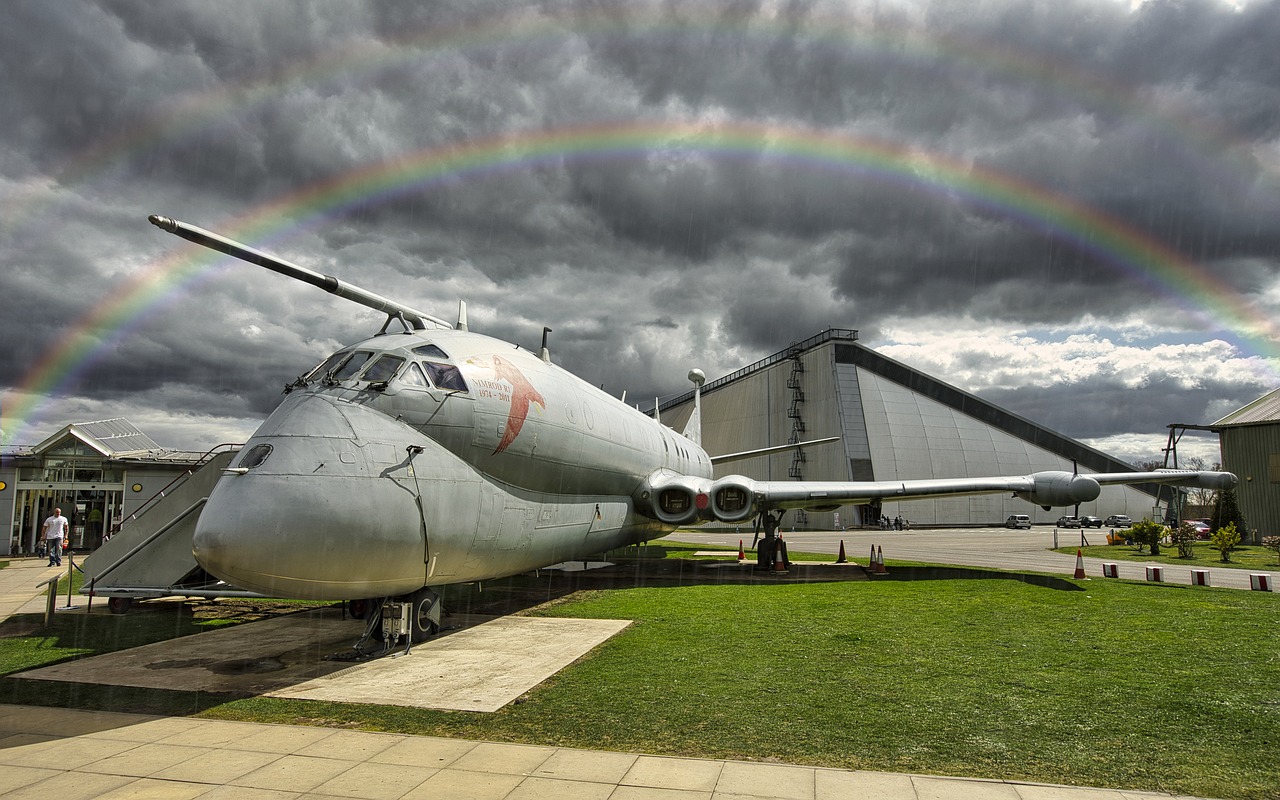
The aviation industry is increasingly aware of its impact on the environment, and as a result, it has begun to implement a variety of mitigation strategies aimed at reducing its carbon footprint. Airlines and aircraft manufacturers are taking significant steps to address the challenge of greenhouse gas emissions. These measures are not just about compliance; they reflect a growing commitment to sustainability and a recognition that the future of air travel must be greener.
One of the most notable strategies involves the introduction of sustainable aviation fuels (SAFs). These fuels, derived from renewable sources, can significantly lower emissions compared to traditional jet fuels. For instance, SAFs can reduce lifecycle greenhouse gas emissions by up to 80%. This shift not only helps in cutting down carbon emissions but also encourages the development of a circular economy within the aviation sector. However, the widespread adoption of SAFs requires collaboration across the industry, including partnerships with fuel producers and investments in new infrastructure.
In addition to SAFs, airlines are also focusing on improving operational efficiency. This includes optimizing flight paths, reducing weight on aircraft, and implementing more efficient ground operations. For example, airlines are increasingly using advanced flight planning software that allows for more direct routes, which can save fuel and reduce emissions. Additionally, the practice of single-engine taxiing is becoming more common, where only one engine is used while taxiing on the ground, further conserving fuel.
Another key area of focus is the adoption of new technologies. Innovations such as aircraft retrofitting with more efficient engines and wing designs are helping to improve fuel efficiency. Many airlines are investing in newer aircraft that are designed with advanced materials and aerodynamics, which can lead to substantial reductions in fuel consumption. For example, the latest models of aircraft can be up to 25% more fuel-efficient than their predecessors. This not only benefits the environment but also reduces operating costs for airlines.
Furthermore, the aviation industry is increasingly collaborating with governments and regulatory bodies to establish environmental standards and policies that promote sustainability. Initiatives like the Carbon Offsetting and Reduction Scheme for International Aviation (CORSIA) aim to stabilize emissions at 2020 levels through a system of offsets. Airlines participating in CORSIA will purchase carbon credits to compensate for their emissions, effectively creating a financial incentive to reduce their carbon output.
To summarize, the current mitigation strategies within the aviation industry are multifaceted and involve a combination of sustainable fuel development, operational efficiencies, technological advancements, and regulatory compliance. Each of these strategies plays a critical role in the industry's journey towards a more sustainable future. As the sector continues to innovate and adapt, we can expect to see even more aggressive targets and initiatives aimed at combating climate change.

The aviation industry is at a crucial crossroads, and alternative fuels hold the key to transforming its environmental footprint. With the growing concern over climate change, the push for sustainable aviation fuels (SAFs) has never been more urgent. These fuels, derived from renewable sources, offer a promising solution to reduce the carbon emissions associated with traditional jet fuels. But what exactly are these alternative fuels, and how can they impact the aviation sector?
To understand the significance of alternative fuels, it's essential to grasp their potential to drastically cut down on greenhouse gas emissions. Conventional aviation fuels, primarily derived from fossil fuels, contribute significantly to the industry's carbon footprint. In contrast, SAFs can reduce lifecycle greenhouse gas emissions by up to 80% compared to traditional fuels. This remarkable reduction is achieved through various means, including the use of feedstocks like waste oils, agricultural residues, and even carbon captured from the atmosphere.
One of the most exciting aspects of SAFs is their compatibility with existing aircraft engines and infrastructure. This means airlines can adopt these fuels without the need for extensive modifications, making the transition smoother and more feasible. However, the production of SAFs is not without its challenges. The current production capacity is limited, and scaling up to meet the growing demand will require significant investment and innovation.
Moreover, the impact of alternative fuels goes beyond just emissions. They also have the potential to stimulate economic growth and create jobs in the renewable energy sector. As more companies invest in the development of SAF production facilities, we can expect to see a rise in employment opportunities in areas such as bioengineering, agriculture, and logistics.
To illustrate the potential of alternative fuels, consider the following table that compares conventional jet fuel with sustainable aviation fuel:
| Criteria | Conventional Jet Fuel | Sustainable Aviation Fuel |
|---|---|---|
| Source | Fossil Fuels | Renewable Sources (e.g., waste oils, biomass) |
| Carbon Emission Reduction | Baseline | Up to 80% |
| Compatibility | Requires new infrastructure | Compatible with current engines |
| Production Capacity | Established | Limited but growing |
In conclusion, the adoption of alternative fuels is a pivotal step toward a sustainable aviation future. While challenges remain, the potential benefits—from reduced emissions to economic opportunities—make it an avenue worth exploring. The aviation industry must continue to innovate and invest in these fuels to pave the way for a greener tomorrow.

When it comes to the quest for sustainable aviation fuels, the debate between biofuels and synthetic fuels is heating up. Both options promise to reduce the aviation industry's carbon footprint, but they come with their own sets of advantages and challenges. Understanding the nuances between these two types of fuels is essential for making informed decisions about the future of aviation and its environmental impact.
Biofuels are derived from organic materials, such as plants and waste products. They offer a renewable source of energy, which is a significant advantage in the fight against climate change. For instance, biofuels can be produced from feedstocks like corn, sugarcane, and even used cooking oil. This means that biofuels can potentially contribute to a circular economy, where waste is converted into valuable resources. However, the production of biofuels can lead to land use changes, which may result in deforestation and biodiversity loss. Moreover, the competition for agricultural land can drive up food prices, raising ethical concerns about food security.
On the other hand, synthetic fuels are produced through chemical processes that convert carbon dioxide and hydrogen into hydrocarbons. This method can utilize renewable energy sources, such as wind or solar power, to produce hydrogen, making synthetic fuels a potentially carbon-neutral option. One of the significant advantages of synthetic fuels is that they can be used in existing aircraft engines and infrastructure without requiring major modifications. However, the production process is energy-intensive and currently expensive, which raises questions about scalability and economic viability.
To better illustrate the differences between biofuels and synthetic fuels, let’s take a look at the following table:
| Criteria | Biofuels | Synthetic Fuels |
|---|---|---|
| Source | Organic materials (plants, waste) | Synthesized from CO2 and hydrogen |
| Renewability | Renewable | Potentially renewable |
| Compatibility | May require engine modifications | Compatible with existing engines |
| Environmental Impact | Land use changes, food security concerns | Energy-intensive production |
| Cost | Varies by feedstock | Currently high, but potential for reduction |
In conclusion, both biofuels and synthetic fuels present unique opportunities and challenges in the aviation sector's shift towards sustainability. The choice between these fuels will likely depend on various factors, including technological advancements, regulatory support, and market dynamics. As we move forward, a combined approach that leverages the strengths of both fuel types might be the most effective strategy for achieving a greener future in aviation.
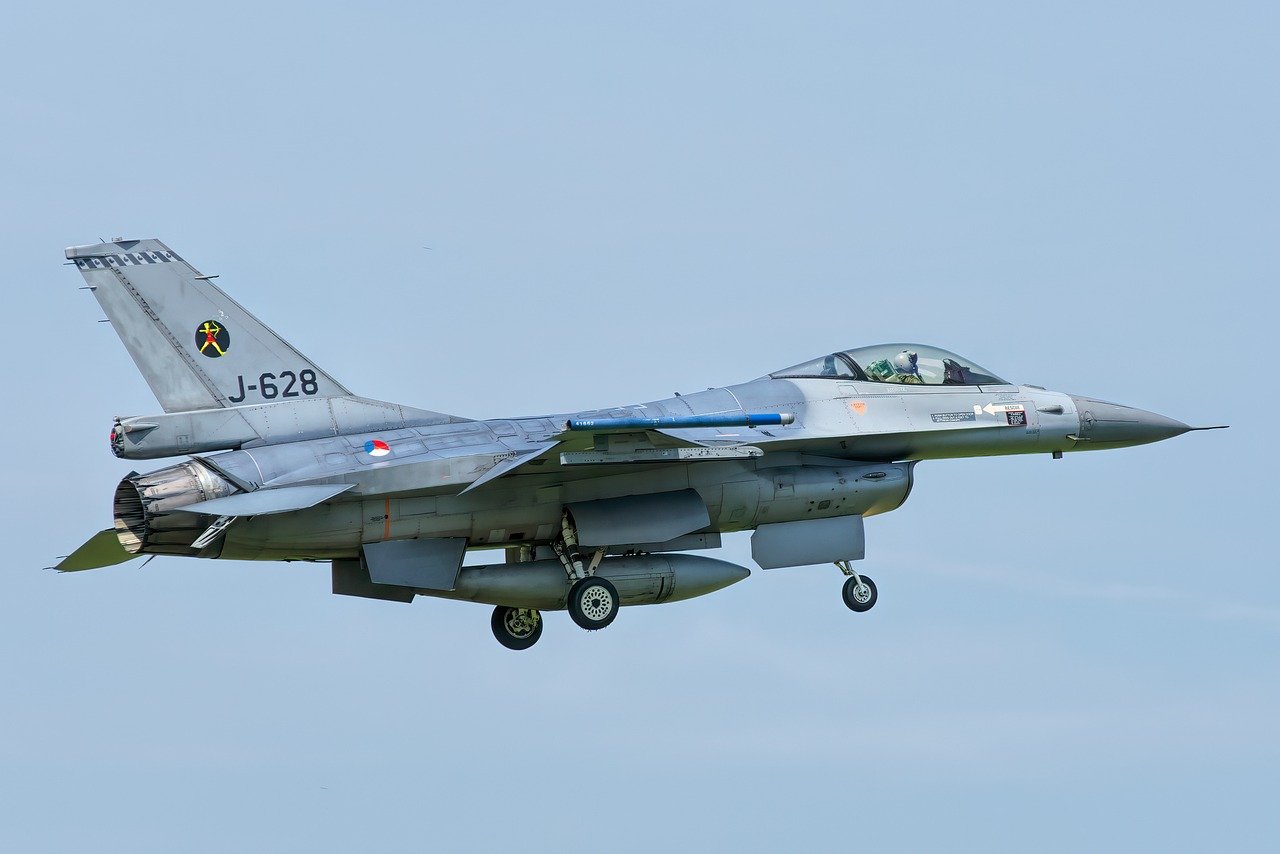
The aviation industry is at a pivotal crossroads, and electrification is emerging as a beacon of hope in the quest for sustainability. Imagine a world where planes glide silently through the skies, powered by electricity rather than fossil fuels. This vision is not just a fantasy; it’s becoming a reality as advancements in electric aviation technology gain momentum. The integration of electric propulsion systems into aircraft design holds the potential to drastically reduce greenhouse gas emissions, making air travel more environmentally friendly.
So, what does electrification mean for the aviation industry? At its core, it involves the use of electric power to propel aircraft, either partially or fully. This shift could lead to significant reductions in fuel consumption and operational costs. For instance, electric aircraft can utilize batteries or hybrid systems that combine traditional engines with electric motors. This dual approach allows for flexibility in design and operation, catering to various flight ranges and capacities.
One of the most exciting aspects of electrification is its potential to transform short-haul flights. Currently, regional flights contribute a notable portion of aviation emissions. By employing electric aircraft for these shorter routes, airlines can significantly cut down their carbon footprint. Consider this: if just 10% of short-haul flights transitioned to electric, the impact on overall aviation emissions could be monumental. This is where the challenge lies, as developing efficient batteries that can store enough energy for longer flights remains a key hurdle.
To illustrate the potential of electrification, let’s take a look at some of the key players in this field. Several companies are already testing electric aircraft prototypes, with promising results. For example, the Airbus E-Fan and Pipistrel Alpha Electro are making waves in the electric aviation sector. These aircraft are designed not just for efficiency but also for performance, demonstrating that electric propulsion can compete with traditional methods.
| Aircraft Model | Type | Range (miles) | Battery Capacity (kWh) |
|---|---|---|---|
| Airbus E-Fan | Electric | 100 | 30 |
| Pipistrel Alpha Electro | Electric | 100 | 21 |
| Bye Aerospace eFlyer | Electric | 300 | 90 |
As we look to the future, the role of electrification in aviation will only grow. The industry is investing heavily in research and development to overcome the challenges associated with battery technology, charging infrastructure, and regulatory hurdles. Collaboration between manufacturers, governments, and research institutions is essential to create a robust framework that supports the transition to electric aviation.
In conclusion, electrification represents a promising pathway for the aviation industry to achieve its sustainability goals. While challenges remain, the potential benefits of reduced emissions, lower operational costs, and enhanced public perception make it a worthy pursuit. As we continue to innovate and adapt, the skies could very well become a cleaner, greener space for generations to come.
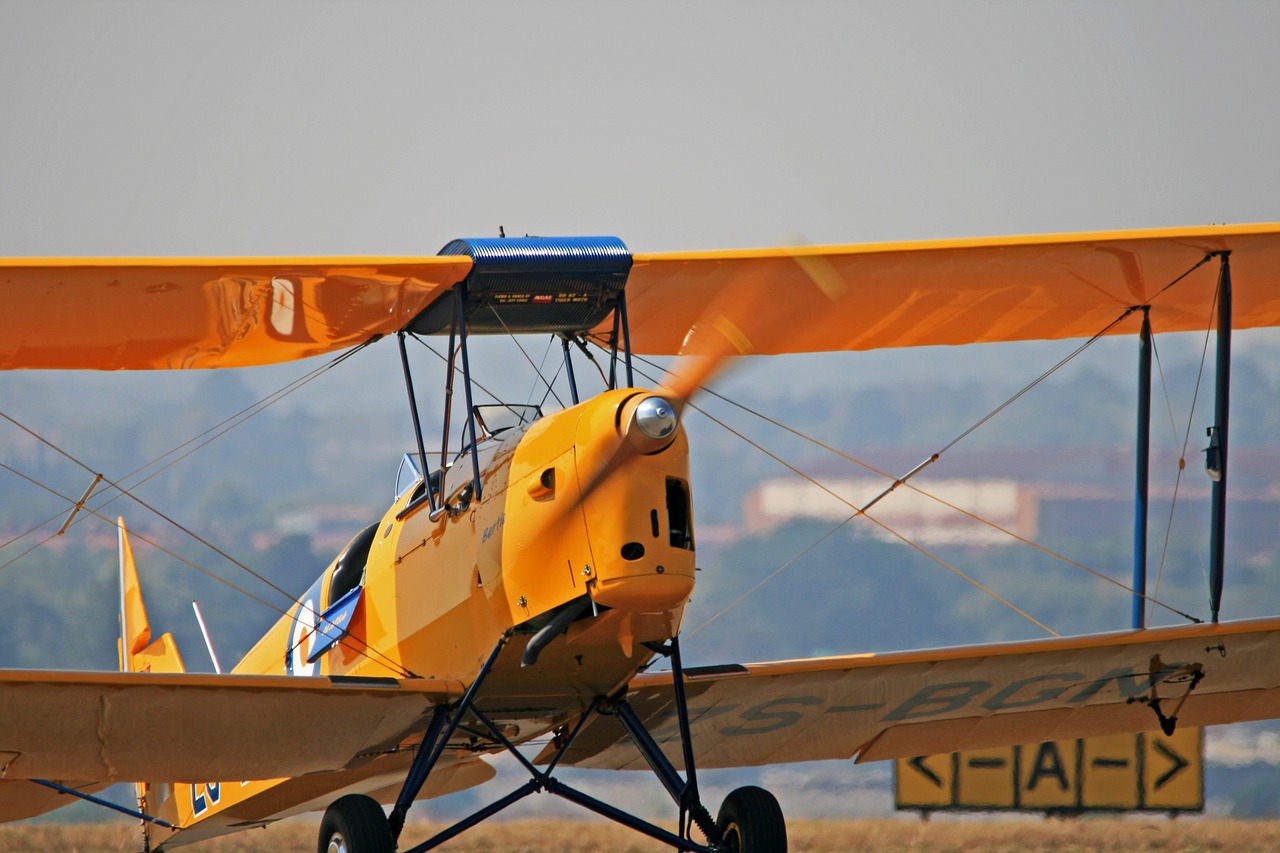
The aviation industry is under increasing scrutiny for its environmental impact, leading to the implementation of various regulatory frameworks and policies aimed at reducing emissions. Governments around the world are recognizing the urgent need to address climate change, and aviation is a significant contributor to global greenhouse gas emissions. As such, these regulations are designed not just to curb emissions but also to promote sustainable practices within the industry.
One of the critical frameworks in place is the Carbon Offsetting and Reduction Scheme for International Aviation (CORSIA), established by the International Civil Aviation Organization (ICAO). This initiative requires airlines to offset their emissions growth above 2020 levels through various means, including investments in renewable energy and reforestation projects. CORSIA aims to stabilize the carbon footprint of international flights, creating a more sustainable aviation sector.
Additionally, many countries have introduced their own regulations to complement international efforts. For instance, the European Union has implemented the EU Emissions Trading System (ETS), which requires airlines operating within Europe to buy carbon allowances for their emissions. This market-based approach incentivizes airlines to invest in cleaner technologies and operational efficiencies.
In the United States, the Federal Aviation Administration (FAA) has introduced several initiatives aimed at reducing aviation's carbon footprint. These include the NextGen program, which modernizes air traffic control systems to improve flight efficiency and reduce fuel consumption. By optimizing flight paths and reducing delays, the FAA aims to significantly lower emissions from the national airspace system.
Despite these efforts, the effectiveness of regulatory frameworks can vary. For example, while CORSIA is a step in the right direction, critics argue that it lacks stringent enforcement mechanisms and may not lead to substantial reductions in emissions. To address these concerns, it is essential for regulatory bodies to continually assess and refine these policies, ensuring they adapt to new technologies and scientific findings.
Moreover, collaboration between governments, airlines, and manufacturers is crucial. By working together, stakeholders can share best practices, develop new technologies, and create a unified approach to sustainability. This partnership can help establish more comprehensive regulations that not only target emissions but also promote innovation in sustainable aviation practices.
In summary, regulatory frameworks and policies play a pivotal role in shaping the aviation industry's response to climate change. As the sector evolves, it is vital for these regulations to remain robust and forward-thinking, ensuring that the aviation industry can contribute to a more sustainable future.

The aviation industry is rapidly evolving, and one of the most exciting areas of this evolution is aircraft design. Innovations in this field are not just about creating sleeker, faster planes; they are fundamentally about improving fuel efficiency and reducing environmental impact. As we face the pressing challenge of climate change, the designs of tomorrow's aircraft must prioritize sustainability. This shift is akin to transforming a traditional gas-guzzler into a cutting-edge electric vehicle, where every detail is optimized for performance and efficiency.
One of the key innovations in aircraft design is the integration of lightweight materials. Traditionally, aircraft were built using heavy metals, which significantly contributed to their overall weight and, consequently, their fuel consumption. However, advancements in materials science have led to the development of composites and advanced alloys that are not only lighter but also stronger. For instance, the use of carbon fiber-reinforced polymers has revolutionized the way aircraft are constructed. These materials can reduce weight by up to 20%, leading to a substantial decrease in fuel use and emissions. Imagine if your car could shed a few hundred pounds—how much less gas would you need to fill up? That's the kind of impact lightweight materials are having on aviation.
Another area of innovation is in advanced aerodynamics. The shape and design of an aircraft play a crucial role in its fuel efficiency. Engineers are now focusing on creating designs that minimize drag and enhance lift. This involves not just the overall shape of the aircraft but also the design of wings, fuselage, and even the engines. For example, the introduction of winglets—those upward-curving extensions at the tips of wings—has proven to reduce drag significantly. According to studies, winglets can improve fuel efficiency by as much as 5% to 10%. This is like adding a spoiler to a car to improve its performance; every small enhancement counts towards a larger goal of sustainability.
Moreover, the concept of modular design is gaining traction in the aviation sector. This innovative approach allows for easier upgrades and modifications to aircraft without requiring a complete redesign. By utilizing modular components, manufacturers can adapt to new technologies as they emerge, ensuring that aircraft remain efficient and environmentally friendly throughout their operational life. Think of it as upgrading parts of your computer rather than buying a new one—this not only saves costs but also reduces waste.
As we look to the future, the integration of artificial intelligence (AI) and machine learning in aircraft design is poised to revolutionize the industry. These technologies can analyze vast amounts of data to optimize designs, predict maintenance needs, and enhance operational efficiency. For instance, AI can help in simulating various flight conditions to determine the most efficient design parameters, leading to innovations we haven't even imagined yet. It's like having a super-smart co-pilot who can crunch numbers and suggest the best flight path while you focus on the journey.
In conclusion, the innovations in aircraft design are not just about making flying more enjoyable; they are essential for creating a sustainable future in aviation. As we embrace lightweight materials, advanced aerodynamics, modular designs, and cutting-edge technologies like AI, we are paving the way for a greener, more efficient aviation industry. The question is not if these changes will happen, but rather how quickly we can implement them to combat the looming threat of climate change.
Lightweight materials, such as carbon fiber and advanced alloys, reduce the weight of aircraft, leading to lower fuel consumption and emissions.
By optimizing the shape and design of aircraft, engineers can minimize drag and enhance lift, resulting in significant fuel savings.
Modular design allows for easier upgrades and modifications to aircraft, making them more adaptable to new technologies and reducing waste.
AI analyzes data to optimize designs and predict maintenance needs, significantly enhancing operational efficiency.
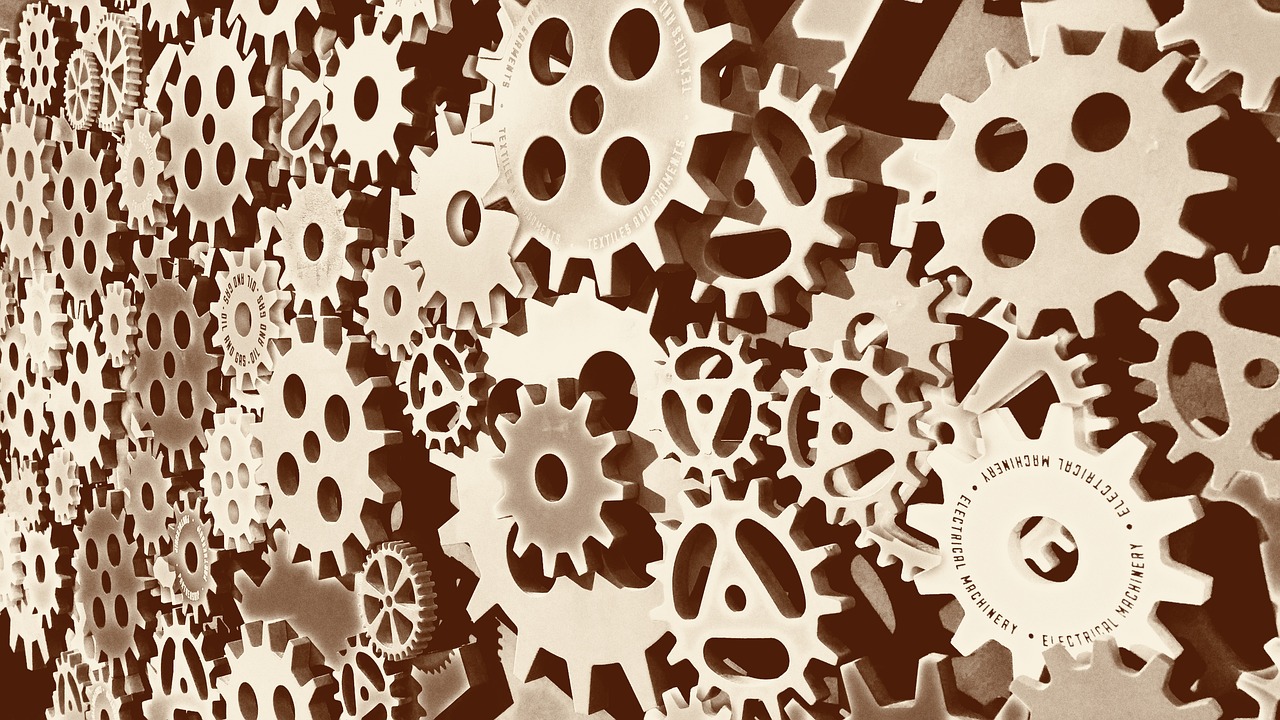
In the quest for a more sustainable aviation industry, the use of has emerged as a game changer. Traditional aircraft are often constructed from heavy metals, which significantly contribute to fuel consumption and greenhouse gas emissions. However, the introduction of advanced materials is revolutionizing aircraft design, leading to notable improvements in efficiency and performance.
One of the most promising lightweight materials is carbon fiber reinforced polymer (CFRP). This composite material is not only lighter than aluminum but also offers incredible strength and durability. By incorporating CFRP into aircraft structures, manufacturers can reduce the overall weight of the aircraft, which translates to lower fuel consumption and reduced emissions. For instance, the Boeing 787 Dreamliner is a prime example of how the use of CFRP has led to a remarkable 20% reduction in fuel use compared to its predecessors.
Another material gaining traction in the aviation sector is aluminum-lithium alloys. These alloys are lighter than traditional aluminum while maintaining similar structural properties. This means that aircraft can be built with a stronger, lighter frame, leading to better fuel efficiency. The use of aluminum-lithium alloys is becoming increasingly common in the construction of commercial jets, further pushing the envelope on what is possible in aircraft design.
Moreover, the aerospace industry is also exploring bio-based composites made from natural fibers. These materials not only provide weight savings but also reduce the carbon footprint associated with aircraft manufacturing. For example, materials derived from flax or hemp are being tested for use in non-structural components, showcasing a commitment to sustainability without compromising performance.
To illustrate the impact of lightweight materials on fuel efficiency, consider the following table:
| Material Type | Weight Reduction (%) | Fuel Efficiency Improvement (%) |
|---|---|---|
| Carbon Fiber Reinforced Polymer (CFRP) | 30-50% | 20% |
| Aluminum-Lithium Alloys | 10-15% | 5-10% |
| Bio-based Composites | 5-10% | 2-5% |
As aircraft manufacturers continue to innovate, the focus on lightweight materials is expected to grow. The ongoing research and development in this field promise to yield even more advanced materials that could further enhance the sustainability of aviation. With these advancements, the aviation industry is not just aiming for compliance with environmental regulations but is actively seeking to lead the charge toward a greener future.
In conclusion, lightweight materials are not merely a trend; they represent a pivotal shift in how aircraft are designed and built. By embracing these innovations, the aviation industry can significantly reduce its carbon footprint and contribute to a more sustainable world. The road ahead is bright, and as we continue to explore new materials, the potential for a cleaner, more efficient aviation sector becomes increasingly attainable.

When we think about the future of aviation, one of the most exciting areas to explore is . This field focuses on the design and shape of aircraft, aiming to minimize drag and maximize efficiency. Imagine a bird gliding effortlessly through the air; that's the kind of efficiency we're aiming for in modern aircraft design. By enhancing the aerodynamic properties of airplanes, manufacturers can significantly reduce fuel consumption and, consequently, greenhouse gas emissions.
The principles of aerodynamics are not new, but the technological advancements we have today allow us to apply these principles in ways that were previously unimaginable. For instance, computational fluid dynamics (CFD) simulations are now used extensively during the design phase. This technology enables engineers to visualize airflow over the aircraft's surface, allowing for precise adjustments that lead to improved performance. The result? Aircraft that are not only faster but also more environmentally friendly.
Furthermore, the integration of winglets—those upward-curving extensions at the tips of wings—has proven to be a game-changer. These small additions can reduce vortex drag, which is a significant source of inefficiency. In fact, studies show that winglets can improve fuel efficiency by up to 5%. While this may seem modest, when applied across the entire aviation industry, the cumulative effect is substantial.
Another fascinating development in advanced aerodynamics is the use of morphing wings. These wings can change shape during flight to optimize performance under varying conditions. Just like how a bird adjusts its wings while flying, morphing wings can adapt to different speeds and altitudes, enhancing lift and reducing drag. This technology is still in its infancy, but the potential implications for fuel savings and emissions reductions are enormous.
The journey towards advanced aerodynamics isn't without its challenges. The aviation industry must balance between innovation and safety, ensuring that new designs are rigorously tested and meet regulatory standards. Nevertheless, the push for efficiency is driving research and development like never before. As we look ahead, the aviation industry is poised to embrace these cutting-edge aerodynamic technologies, paving the way for a sustainable future.
In summary, the advancements in aerodynamics are crucial for reducing the environmental impact of aviation. With ongoing research, we can expect to see more innovative designs that not only improve performance but also contribute to a greener planet. The future of flying is not just about reaching new heights but doing so responsibly and sustainably.
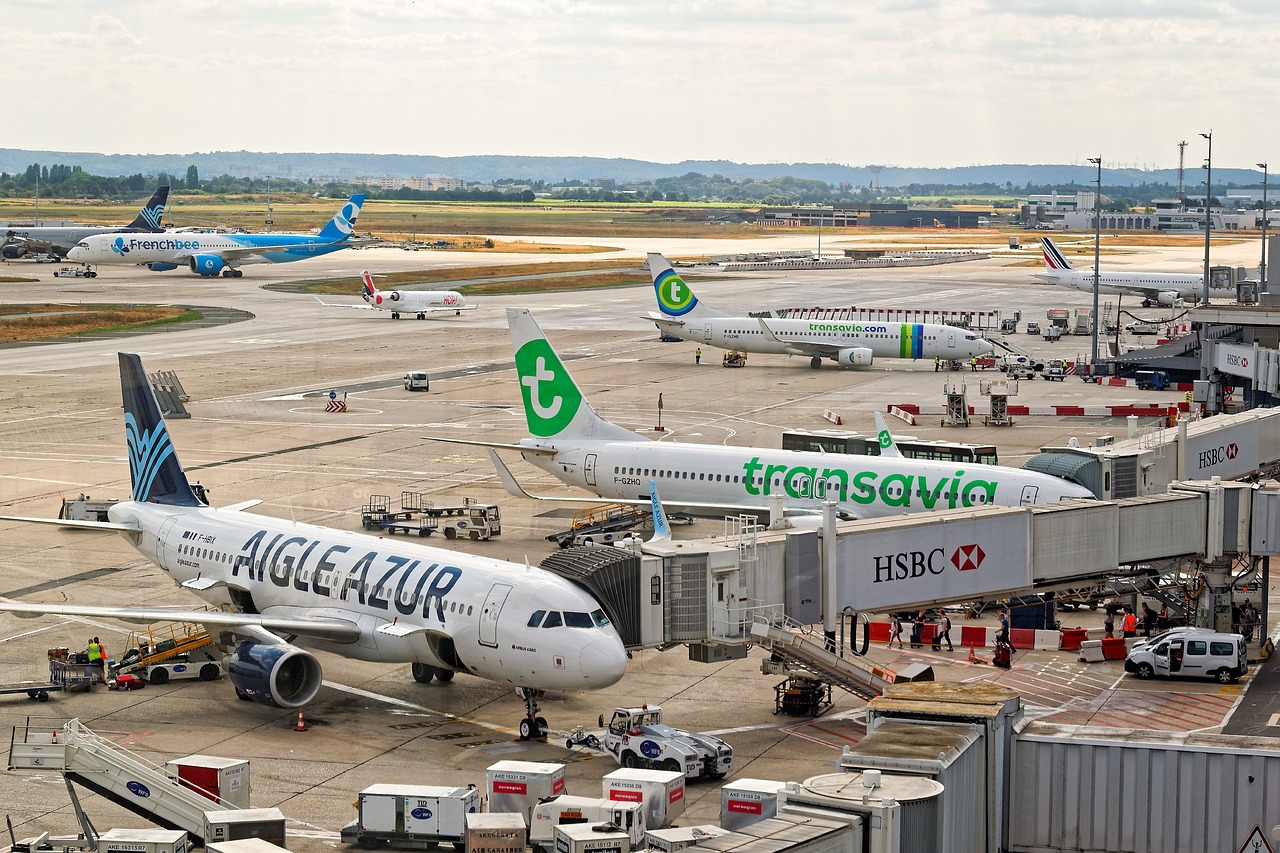
The aviation industry is on the brink of a major transformation, driven by the urgent need for sustainability. As we look to the future, several exciting trends are emerging that promise to reshape how we fly while significantly reducing our carbon footprint. Imagine a world where flying is as clean as taking a train, where the skies are clear of pollution, and where the aviation sector plays a pivotal role in combating climate change. This vision is not just a dream; it's becoming a reality through innovation and commitment.
One of the most promising trends is the rise of sustainable aviation fuels (SAFs). These fuels, derived from renewable resources, have the potential to reduce lifecycle carbon emissions by up to 80% compared to traditional jet fuels. As more airlines commit to using SAFs, we can expect a significant shift in the industry. Major players like United Airlines and British Airways are already investing in SAF production, paving the way for a greener future. The challenge lies in scaling up production and making these fuels commercially viable.
Another trend to watch is the electrification of aircraft. While electric planes are still in their infancy, advancements in battery technology are accelerating their development. Companies like Airbus and Zunum Aero are working on hybrid and fully electric aircraft that could revolutionize short-haul flights. These aircraft promise not only to reduce emissions but also to lower operating costs for airlines. Imagine hopping on a plane powered entirely by electricity, much like your electric car. It’s a thrilling concept that could soon be a reality.
Furthermore, we can’t overlook the role of urban air mobility (UAM). With the advent of flying taxis and drones, UAM is gaining traction as a solution to urban congestion and pollution. These aerial vehicles are designed to operate in urban environments, providing a quick and efficient means of transport. Companies like Volocopter and Joby Aviation are at the forefront of this movement, working to integrate these technologies into our daily lives. However, the success of UAM will heavily depend on regulatory frameworks and public acceptance.
Moreover, advancements in aircraft design are set to play a crucial role in the future of sustainable aviation. Innovations such as blended wing body designs and the use of lightweight materials are enhancing aerodynamics and fuel efficiency. For instance, the use of carbon-fiber composites can reduce an aircraft’s weight, leading to lower fuel consumption and emissions. As these technologies become more mainstream, we can expect to see a new generation of aircraft that are not only more efficient but also more environmentally friendly.
Lastly, the integration of artificial intelligence (AI) and big data analytics in aviation operations is set to optimize flight paths, improve fuel efficiency, and reduce delays. By analyzing vast amounts of data, airlines can make informed decisions that lead to more efficient operations. For example, AI can help determine the most efficient flight routes, minimizing fuel burn and emissions. This tech-savvy approach to aviation is not just about improving the bottom line; it’s about creating a sustainable future for air travel.
The aviation industry is responsible for a significant portion of global greenhouse gas emissions. Factors such as fuel consumption, flight frequency, and the type of aircraft all contribute to its carbon footprint. As air travel increases, so does its environmental impact, making it crucial to address these emissions.
Airlines and manufacturers are actively working on various strategies to mitigate their environmental impact. These include improving fuel efficiency, investing in sustainable aviation fuels (SAFs), and enhancing operational practices. Additionally, advancements in technology play a pivotal role in reducing emissions across the industry.
Sustainable aviation fuels (SAFs) are biofuels or synthetic fuels designed to replace conventional jet fuels. They are crucial for reducing the overall carbon emissions of the aviation sector. SAFs can be produced from renewable resources, making them a key component in the industry's efforts to achieve climate goals.
Biofuels are derived from organic materials, while synthetic fuels are created through chemical processes. Each has its advantages and challenges. Biofuels can be more sustainable if sourced responsibly, but they may compete with food production. Synthetic fuels, on the other hand, can be produced from various sources but often require more energy to create.
Electrification of aircraft is an exciting frontier in reducing emissions. Current developments include small electric planes for short-haul flights and hybrid-electric systems that combine traditional engines with electric propulsion. These innovations could revolutionize the industry, making air travel cleaner and more efficient.
Government regulations play a vital role in shaping the aviation industry's approach to sustainability. Policies aimed at reducing emissions, such as carbon taxes and emissions trading systems, encourage airlines to adopt greener technologies and practices. These regulations help hold the industry accountable for its environmental impact.
Innovations such as the use of lightweight materials and advanced aerodynamic designs are significantly enhancing fuel efficiency in modern aircraft. These advancements help reduce drag and overall fuel consumption, making flying more sustainable and cost-effective.
Lightweight materials, such as carbon fiber and advanced composites, are crucial for reducing the weight of aircraft. A lighter aircraft requires less fuel to operate, which directly contributes to lower emissions. The aviation industry is increasingly adopting these materials to improve efficiency and performance.
The future of sustainable aviation is bright, with trends like the development of electric and hybrid aircraft, further advancements in SAF technology, and a greater emphasis on circular economy practices. As the industry evolves, these innovations will help reshape air travel for a greener future.